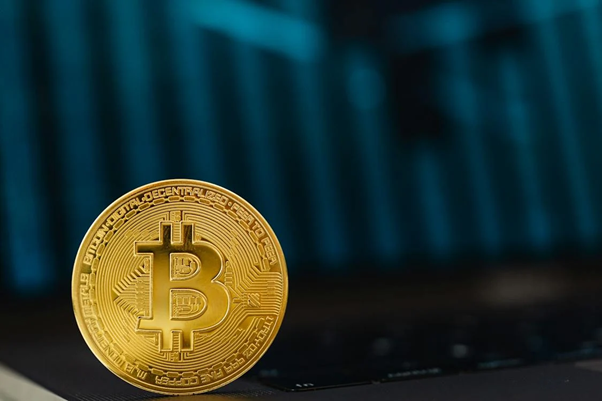
IoT-powered Decentralised Exchanges (DEXs) are a revolutionary wave transforming the future of digital asset trading. These cutting-edge platforms are revolutionising asset trading by displacing conventional centralised systems and ushering in an era where autonomy and technology coexist. An unprecedented degree of efficiency, security, and transparency is brought to DEXs by the Internet of Things (IoT) as it entangles itself around various objects and systems. Peer-to-peer transactions enabled by this combination empower traders and usher in a new era of digital finance. By accepting this shift, companies and people are poised to participate in a trade revolution that completely transforms the digital economy.
What are IoT-Powered Decentralised Exchanges?
IoT is a network of networked devices that may exchange data, automate tasks, and communicate. When DEXs and IoT are combined, a new crypto exchange is created. In contrast to conventional exchanges that function through a central authority, DEXs enabled by IoT technology flourish on decentralised networks. This combination allows for safe, decentralised trading, utilising the Internet of Things to transform digital asset markets.
Compared to its centralised equivalents, IoT-powered DEXs have the following essential advantages:
- Enhanced Security and Privacy: These exchanges minimise the danger of a data breach and provide consumers more control over their information by utilising a dispersed network to replace the requirement for a central authority.
- Enhanced Efficiency and Decreased Expenses: IoT-driven DEXs, which run on a peer-to-peer network, do away with intermediaries, resulting in cheaper transaction costs and savings, especially for companies that depend on digital asset trading.
- Increased Accountability and Transparency: Using distributed ledger technology, these exchanges provide auditable and transparent transactions, essential for combating financial crimes, especially in regulated sectors like healthcare and banking.
How Can Businesses Use IoT-Powered Decentralised Exchanges?
DEXs enabled by IoT present enterprises with game-changing opportunities. Because these networks eliminate single points of failure and decentralise control, they save infrastructure and maintenance costs, particularly for manufacturers. As the web moves towards a decentralised architecture, individual devices can operate independently, serving as transactional hubs and generating revenue. Examples include big format screens that can manage advertising material independently or Internet of Things appliances like a Samsung washer that can order supplies alone. The “Economy of Things,” in which gadgets actively engage in markets to maximise asset utilisation and profitability, is made possible by these skills.
Projects such as the Autonomous Decentralised Peer-to-Peer Telemetry (ADEPT) demonstrate creative uses of IoT in decentralised exchanges. This platform takes advantage of fundamental features, including distributed file sharing, autonomous device coordination, and peer-to-peer communications. For example, ADEPT uses open-source protocols such as BitTorrent for file sharing and Telehash for communications, while Ethereum offers a blockchain system for device coordination. Thanks to these features, devices may barter energy, exchange analytics data, alert owners, and even pay untrusted devices without centralised supervision. This concept shows how IoT-powered DEXs may create safe, self-governing platforms for data exchange and transactions across various sectors.
The Impact of IoT-Enhanced Decentralised Exchanges
Integrating IoT into decentralised exchanges, or DEXs, is a paradigm shift that can completely reshape our economic environment and be a technological achievement. Devices become active economic agents when they can engage in economic activity thanks to IoT-enhanced DEXs. This revolution offers a more inclusive and decentralised economy where gadgets can negotiate energy use, manage assets autonomously, and even engage in micro-commerce. It goes beyond simple transaction efficiency.
This transition signals the beginning of the “Economy of Things”, in which every IoT-connected gadget can produce and exchange value, resulting in a more flexible and adaptable financial system. Experts at Bitcoin Apex remark that this new approach may empower small actors, promote innovation, and democratise access to economic possibilities by decreasing reliance on centralised control and intermediaries.
The Future of IoT-Powered DEXs and Dapp Development
The development of decentralised apps (dApps) and how they interact with IoT devices will significantly impact the future of IoT-powered DEXs. dApps, which function without centralised management, give the already fragmented and diverse Internet of Things a more cohesive framework as it grows. These blockchain-based applications provide decentralised, open-source data storage and cryptographic validation. This opens the door for more intricate and interactive applications across a range of markets and sectors, in addition to improving the security and interoperability of IoT devices.
Network connection problems are now impeding the full potential of dApps and the Internet of Things. The majority of current networking solutions could be more efficient when it comes to connecting an extensive range of devices. This connection issue must be resolved for decentralised applications and IoT-powered DEXs to be widely adopted and effective. Technological innovations like Helium, which provides long-range connections, hold the potential for addressing these constraints. We may expect significant growth in the capabilities and uses of IoT-powered DEXs as these technical developments continue, surpassing present limitations and opening up new opportunities for digital economies and device interactions.
Decentralised exchanges driven by IoT constitute a revolutionary transformation in the environment around the trade of digital assets. These systems combine blockchain technology’s decentralised characteristics with IoT’s sophisticated connectivity to improve security, efficiency, and transparency. The possibilities of IoT-powered DEXs are expected to be significantly enhanced as we incorporate long-range connection technologies like Helium and decentralised apps (dApps). This development paves the way for a more integrated and independent economic future by representing a significant technological advance and a fundamental shift in our understanding of and interactions with digital economies.

